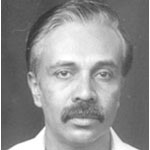Along, enduring and eventful journey of nearly seven decades came to an end when Surendra Nihal Singh breathed his last in Delhi on 16 April 2018. Nihal Singh was a very popular journalist and columnist who helmed three newspapers, penned a number of books, and also contributed syndicated columns to many newspapers in the country. The biggest feather in his cap, however, was the courage and determination he displayed during the dark days of the emergency in the year 1975. Singh who was then a Resident Editor with the Kolkata daily The Statesman, stood up to the rigours of the emergency, refusing to be browbeaten and even published a front page in black in his daily. Nihal Singh was born on 30 April 1929 in Rawalpindi, now in Pakistan. After completing his school and college education with a Bachelors degree with Honours from the Delhi University, he opted for a career in journalism, and his first piece was published at the age of 18 in a paper called The Tribune.
Singh’s innings in print journalism began in 1951 when the joined The Times of India as a sub-editor. But his longest tenure was with The Statesman where he served for over two and a half decades in various capacities as a Resident Editor of the paper in Delhi, and then as the Chief Editor in Calcutta (now Kolkata). After an acrimonious parting of ways with the owner of The Statesman, the redoubtable C.R. Irani, Singh joined The Indian Express and was its Editor-in-Chief for a year from 1981-82. Here again differences cropped up between him and another well-known media baron and the proprietor of the Express, Ramnath Goenka, and Singh put in his papers. He then found an opportunity to steer a freshly minted daily The Indian Post promoted by reputed industrialist Raymond Singhania. The stint was just for a year, and the paper too soon folded up. Singh’s last port of call was the Khaleej Times of Dubai. During his tenure as a journalist he also served in several countries abroad, and was considered an authority on foreign affairs as well. As an editor he was liberal, very democratic, and he was also a mentor to many budding journalists who worked with him, putting them through their paces, instilling in them a sense of ethics and fairplay.
Right through his life as a journalist, Singh remained a trenchant critic of the establishment and opposed the draconian measures undertaken by the Indira Gandhi regime during the emergency to muzzle the press, tooth and nail. His pioneering efforts to protect the freedom of the press was recognised at the international level as well, and Singh was awarded the prestigious International Editor of the Year award for his robust opposition to the Emergency. The award was presented to him at a function held in New York. Singh along with leading journalists like Kuldip Nayar and Khushwant Singh was a hugely popular syndicated columnist and his columns were virtual treatises on national affairs, foreign policy and so on. A fierce critic of the Modi regime, Singh often came down heavily on the central government, highlighting issues like intolerance, majoritarianism, the unfettered rise of the Hindutva lobby, and so on. He also authored a book The Modi Myth, which again was a scathing commentary on the ills that were plaguing the system.
Nihal Singh also wrote as many as fourteen books including ‘I discover America’, My India, The Rocky Road of Indian Democracy, and The Yogi and the Bear. His autobiography Ink In My Veins – A life in journalism, which was released in 2011, covered a long span in his life and offered readers vignettes of his halcyon days as an uncompromising journalist. Like his contemporaries and fellow columnists the late Khushwant Singh and M.V. Kamath who continued to write columns even after they had reached their nineties, Nihal Singh too continued to write till he reached his late eighties, and avid readers of his columns are certain to miss his erudite scholarship and meticulous research into his subjects.

 [/column]
[/column]